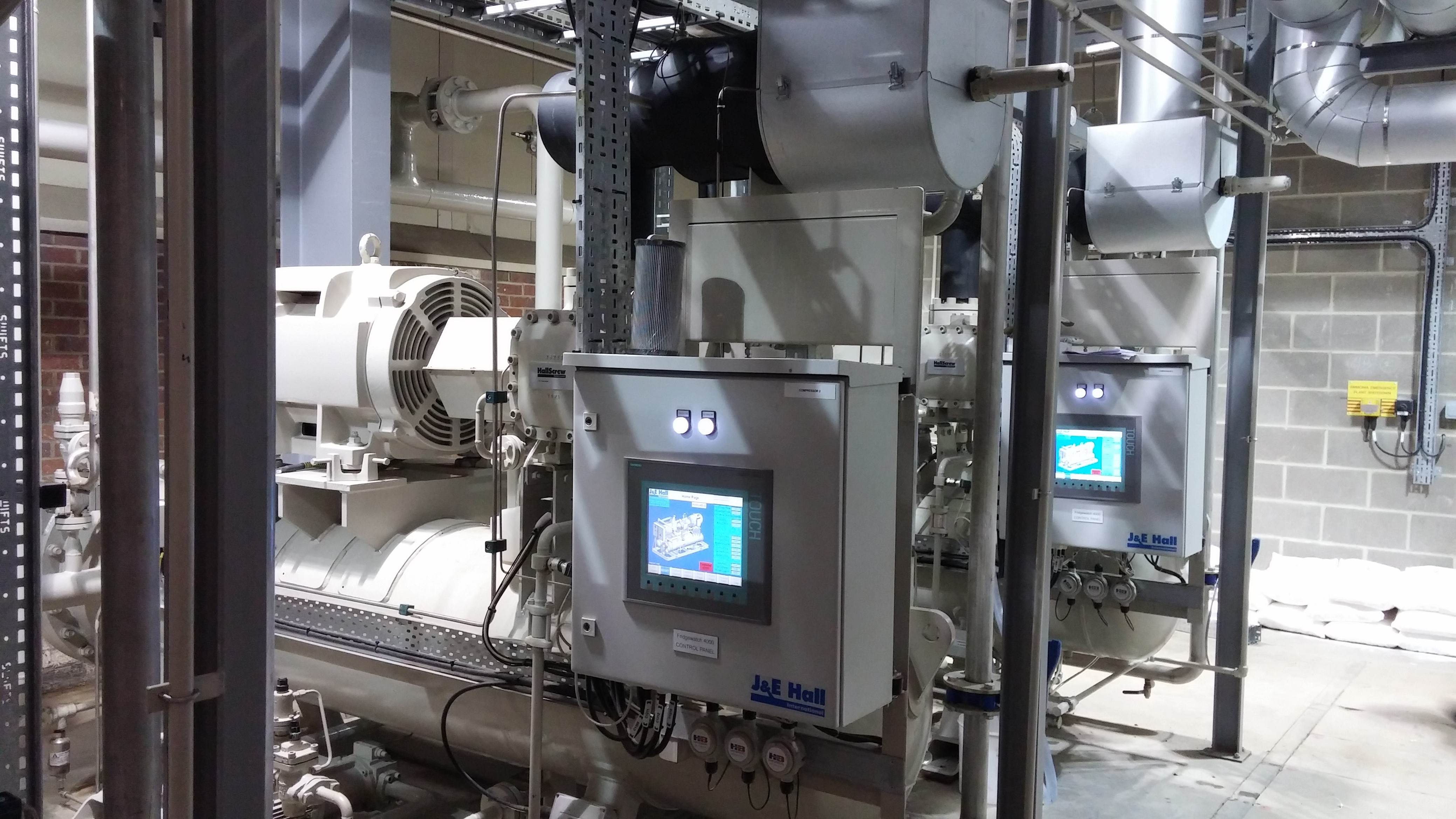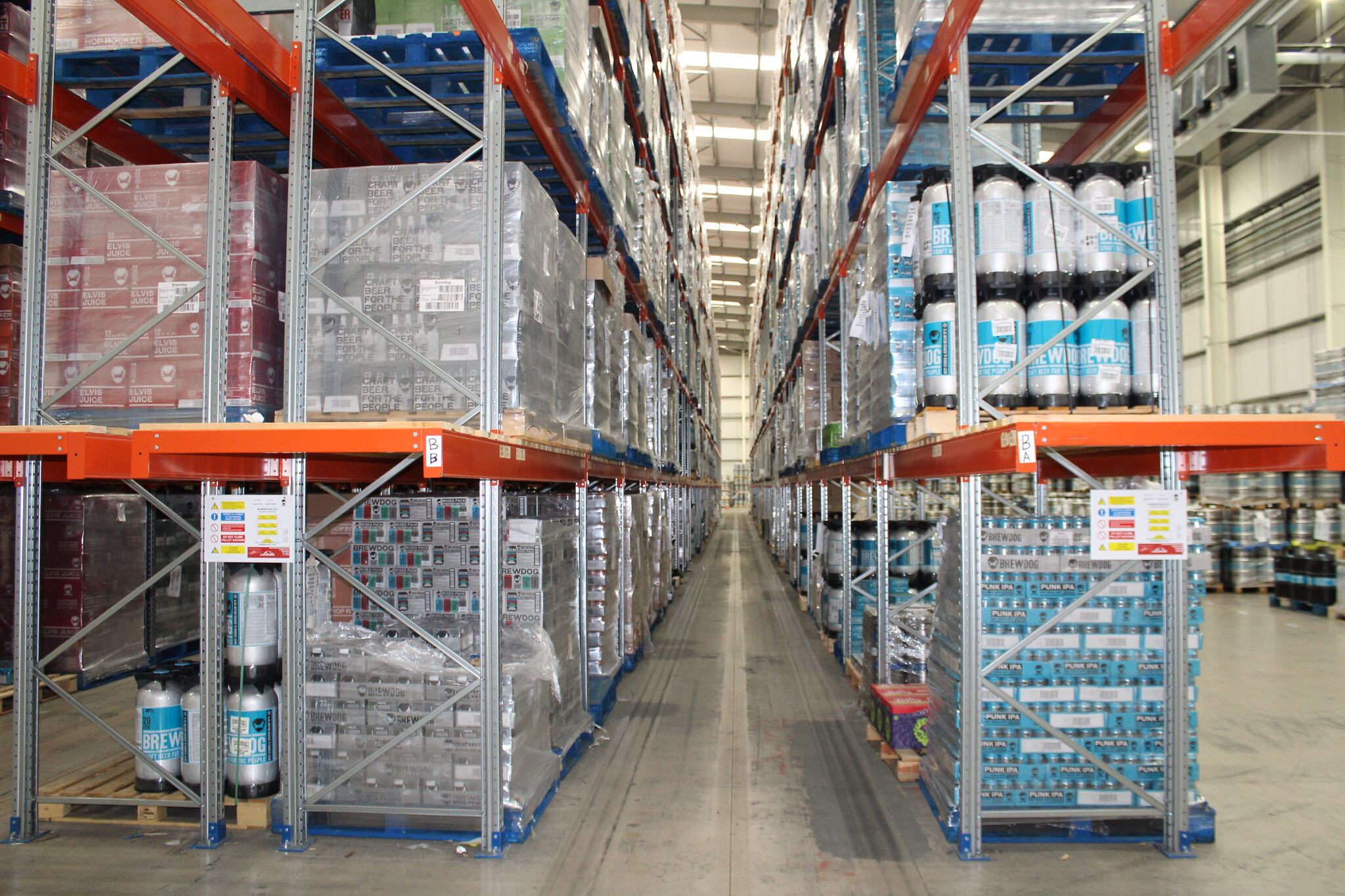Much as compliance with environmental legislation and reducing the carbon footprint is an important goal for food and drink manufacturers, the need to cut energy bills is perhaps the biggest driver of investment in new systems.
And, from low-energy refrigerants to heat recovery, air displacement and energy management systems, the latest developments in refrigeration and temperature control can offer firms significant cost savings.
Refrigeration provider J&E Hall pledges to take pressure off those companies confused about rapidly evolving environmental requirements, including the F-Gas Regulation coming into force on 1 January 2020, and the related shift to low Global Warming Potential (GWP) refrigerants.
Cost-effective production
Working in partnership with customers “gives us a better understanding of the demands of specific site restrictions, allows the customer greater energy efficiencies and the end-game of a more cost-effective production operation,” says Andrew Bowden, managing director at J&E Hall.
“It is crucial that food processors give themselves an edge by coming to terms with the changing refrigeration landscape. Next year’s service ban on the use of high-GWP virgin refrigerants, and the ban on the use of refrigerants with a GWP of more than 2,500, means that low-GWP and greener alternatives will further influence the choices made by food processors and their refrigeration suppliers.”
Low-GWP refrigerants from J&E Hall include the Aquachill, a low-charge ammonia chiller with a refrigerant charge of around 0.1kg per kilowatt, while offering the added bonus of a reduced maintenance programme.
J&E Hall also supplies open-drive compressors compatible with any refrigerant, from ammonia to HFCs and HFOs.
“We have developed an Atex compressor and continue to expand the range suitable for flammable refrigerants,” says Bowden. “All of this new technology can help reduce a customer’s reliance on high-GWP refrigerants.”
Natural refrigerants
Other refrigeration suppliers point to a growing trend towards natural refrigerants, as these are better for the environment and provide long-term security for customers.
“Synthetic refrigerants such as HFCs have a finite life under the EU F-Gas Regulation and customers don’t like the uncertainty this brings,” says Dr Robert Lamb, group sales and marketing director at Star Refrigeration.
The Azane range of ammonia machines and the Envi range of CO2-based models were developed by Star Refrigeration in response to rising demand for greener options.
“A growing number of customers also want to look deeper into data relating to the operation of their facilities including the efficiency and reliability of refrigeration systems,” says Lamb.
“[Performance optimisation and energy management system] Ethos measures real-time system data and inputs this into a live model of the refrigeration system. This then carries out a comparison of actual energy consumption against theoretical performance and highlights areas for improvement and the associated savings possible.”
Recent installations of Ethos include The Ice Co Storage & Logistics’ refrigeration plant in Wakefield, where annual savings of £100,000 in energy bills, and 310t in carbon emissions were achieved after Star Technical Solutions supplied the system.
“We’re hearing stories of 15–25% increases in customer energy rates in 2019, which is focusing them on ways of cutting consumption and ensuring plant is operating as efficiently as possible all year round,” says Lamb.
Operational costs
The need to eradicate harmful refrigerant gases is just one of several factors driving change in the refrigeration market. Others include Government targets to reduce CO2 emissions and market growth in UK food production, says Mark Culley, managing director of JDI Cooling Systems, part of the JD Cooling Group.
“However, in recent years we’re seeing operational costs as the major contributing factor, with many of our customers thinking long-term and prioritising lower running costs over a lower purchase price amid rising energy costs,” Culley explains.
“We focus on energy-efficient designs with cost-effective operational value. Where suitable, we will recommend a natural refrigerant to future-proof against the growing cost of refrigerants with high GWP.”
One of JDI’s customers, which supplies temperature-controlled systems to manufacturers of all sizes, is Norfolk poultry and game processor Gressingham Foods.
JDI supplied a secondary cooling system for Gressingham Foods’ new distribution centre. The energy-efficient, low-charge refrigeration system uses R449A HFC as the primary refrigerant to service a chill store area operating at 2°C and a cold store at -22°C, year-round.
The installation also makes use of advances in heat recovery, with a pumped warm glycol system using waste heat from the central refrigeration plant used to provide the defrost.
An underfloor heating system beneath both the chill store and cold store uses pumped warm 32% DTX Coolflow also generated from recovered waste heat.
Savings of up to 65% on energy consumption costs, and 82% on CO2 output, can potentially be achieved through heat recovery, says Culley.

Air conditioning and extract systems
Penmann Climatic Systems, a supplier of temperature-controlled solutions for the UK food industry, offers bespoke services to help manufacturers gain energy efficiencies by reducing the pressure on refrigeration equipment.
“We air-condition production areas to exact standards of temperature and humidity to ensure products are maintained at their correct technical requirements,” says Penmann commercial director John Kirwin. “We also ventilate and provide extract systems to prevent excessive temperatures in process areas that will affect both products and personnel.”
When it comes to production area cooling, Penmann advocates the use of displacement air distribution systems. “While the technology has been around a while, applying it to the food industry has some real benefits, both in delivering air to where it is required – i.e. the occupied zone at floor level – and also in energy efficiency, as areas can be conditioned with reduced refrigeration requirements, helping reduce operating costs and a company’s carbon footprint,” says Kirwin.
Replacing conventional air conditioning and ventilation systems with displacement technology can result in substantial efficiencies for manufacturers with high heat loads or high roofs in particular, he adds.
Penmann recently upgraded the displacement air conditioning system for a blue-chip snacks manufacturer with a plant that serves two packing halls with an area in excess of 13,500m2 and a cooling load greater than 1MW.
As a result, Kirwin says the client was able to reduce the number of air handling units by half and, in conjunction with a new refrigeration plant, reduce electricity costs by an estimated £70,000-plus a year. With the new system requiring a supply air temperature of 17–26°C, the refrigeration plant is only required to operate for 30% of the year.
Star Refrigeration serves BrewDog a cool one
Star Refrigeration is laying claim to Europe’s first fully refrigerated beer warehouse, with its eco-friendly CO2 refrigeration system created for BrewDog’s warehouse at Eurocentral in Scotland.

A specialist in natural refrigerants, Star Refrigeration was commissioned by BrewDog to design and install a new plant for chilling its beers to 5°C for distribution.
An eco-cooling system was designed for the 80,000m2 warehouse and chilled distribution centre in Motherwell, offering future-proofing against the F-Gas Regulation.
Keeping costs down was a big focus during the design and installation of the project, with smaller pipework saving on steelwork and installation costs. The end-product is said to have delivered savings of 30% in comparison to traditional ammonia glycol systems, while enabling BrewDog to maintain the quality and flavour of its craft beers.
The CO2 refrigeration package is a standalone system, located on the exterior of the building and connected to six off-air coolers via pipework. Liquid CO2 from the package is supplied to the coolers, where it evaporates, removing heat from the room and returning to the pack as vapour.




